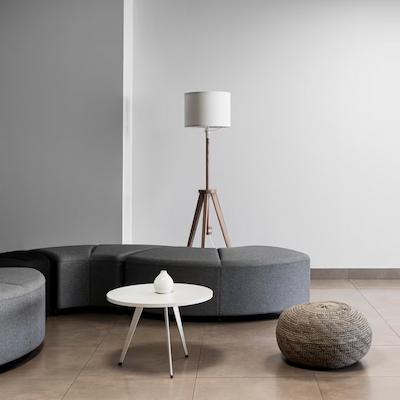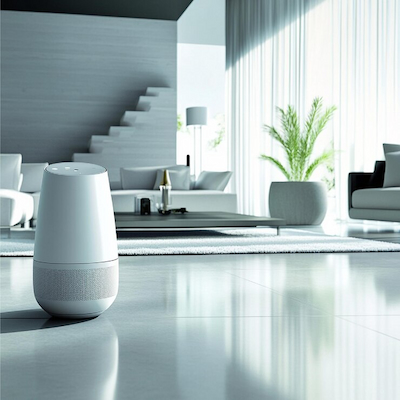
Minimalism in interior design is an approach that has grown in prominence in recent years. This philosophy proposes creating environments that prioritize simplicity, functionality, and clean aesthetics—eliminating excess and focusing on what is truly essential. The core idea of minimalism is that less is more, reflected in how spaces are organized and decorated. By adopting this approach, designers and homeowners aim to create environments that promote tranquility and mental clarity, distancing themselves from disorder and visual chaos.
Beyond being an aesthetic trend, minimalism in interior design responds to contemporary needs for simplicity and efficiency. In a fast-paced, stimulus-filled world, many people seek refuge in homes that offer peace and harmony. Minimalism becomes an ideal solution, allowing individuals to feel more connected to their spaces and to themselves. This article will explore minimalist principles, their advantages, and practical tips for creating clean and essential environments.
How Principles of Minimalism Work in Interior Design
Minimalist interior design is based on fundamental guidelines that aim to create functional and visually pleasing spaces. One pillar of this approach is using a restricted color palette. Neutral tones—white, gray, earthy hues—are often chosen to evoke calm and clarity. This choice helps maintain focus on the essential elements of the space, avoiding visual distractions.
Another key principle is the careful selection of furniture and decorative objects. In minimalist design, every item must have a clear purpose and specific function. This means choosing furniture not only for its appearance but also for its usefulness and comfort. Each piece should contribute to the harmony of the space, avoiding clutter. Multifunctional furniture—like sofa beds and storage ottomans—is often preferred, as it helps optimize available space.
Lighting plays a crucial role in minimalist interiors. Well-lit spaces that maximize natural light are essential for creating a welcoming atmosphere. Large windows and light curtains allow light to enter, while simple and elegant fixtures complement natural illumination. Lighting should highlight the most important elements, creating visual balance and enhancing the sense of space and tranquility.
Organization and placement of elements are fundamental to successful minimalist design. Furniture arrangement should facilitate movement and create comfortable living areas. It’s important to avoid overcrowding, allowing each element to have its place and importance. Built-in shelving and discreet cabinetry help keep items organized and out of sight, contributing to the clean and clear atmosphere that characterizes minimalism.

Advantages of Adopting Minimalism in Interior Design
Embracing minimalism in interior design brings advantages that extend beyond aesthetics. One key benefit is a more organized and functional environment. With fewer objects and pieces of furniture, it’s easier to keep the home tidy and orderly, resulting in a sense of well-being and calm. The simplicity of minimalist design streamlines daily routines, making it easier to find what’s needed.
Another advantage is sustainability. By choosing durable, quality furniture and objects, minimalists tend to consume less and favor items that make a difference in their homes. This contributes to waste reduction and more conscious consumption. Focusing on essentials also helps avoid impulsive and unnecessary purchases, saving money and resources.
Minimalism also promotes mental health and well-being. Orderly environments reduce stress and anxiety, while clean, organized areas foster calm and mental clarity. The feeling of space and freedom that minimalism provides can be refreshing, helping individuals feel more relaxed and focused. The simplicity of design can also stimulate creativity and productivity, making spaces more inspiring.
Finally, minimalism is a form of personal expression. By adopting this approach, individuals reflect their values and lifestyle in their homes. Minimalism enables people to focus on what matters—whether a meaningful artwork or a treasured piece of furniture—creating an emotional connection with the environment. This enriches the living experience, making spaces not only beautiful but also meaningful.
How to Create Clean and Essential Spaces with Minimalism
Here are practical steps to transform any environment into a clean, minimalist space:
-
Detoxify the space. Evaluate every item and decide if it truly serves a purpose or holds emotional value. Remove items that are no longer needed or bring no joy to allow the space to breathe.
-
Plan furniture placement. Choose multifunctional pieces to optimize space and strategically arrange them to facilitate circulation and define living areas.
-
Select a neutral and calming color palette. Soft and earthy hues create harmony.
-
Introduce texture with fabrics and materials to add visual interest. Rugs, cushions, and curtains can layer comfort without clutter.
-
Maximize natural light and add simple lighting fixtures to highlight key areas and maintain visual balance.
-
Keep pathways clear. Design furniture arrangements that allow for easy movement and promote a sense of openness.
With these tips, you can create environments that not only meet functional needs but also offer a pleasant and relaxing aesthetic experience.

Do You Like Exploring Minimalism in Interior Design: Clean and Essential Spaces?
Frequently Asked Questions
What is minimalism in interior design?
Minimalism in interior design focuses on clean and essential spaces. It emphasizes having fewer things with more meaning.
How can I apply minimalism in my home?
To apply it, start by removing unused items. Choose simple furniture and neutral colors to make the space feel lighter.
Is minimalism expensive?
No! You can adopt minimalism economically. Simple items or even pieces you already own can work beautifully.
What are clean and essential spaces?
Clean spaces are free from clutter. They include only what’s necessary for comfortable living without excess.
Can minimalism be cozy?
Yes! Even with simplicity, you can create a warm environment by adding soft textiles, cushions, and a personal touch.
How do I start transitioning to a minimalist interior?
Begin by decluttering your space. Focus on removing items you don’t use or need, and then gradually introduce neutral colors, clean lines, and functional furniture that serve a clear purpose.
Can minimalism work in small spaces?
Absolutely. Minimalism is especially effective in small spaces because it prioritizes functionality and avoids clutter. Smart storage, light colors, and multipurpose furniture can make compact areas feel open and calm.
Is minimalism suitable for families with children?
Yes, with thoughtful planning. Minimalist design can help create organized, calm environments that benefit both adults and children. Incorporating practical storage and keeping only meaningful, essential items helps maintain balance and simplicity.

